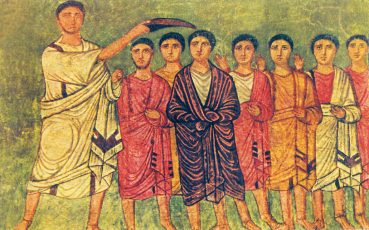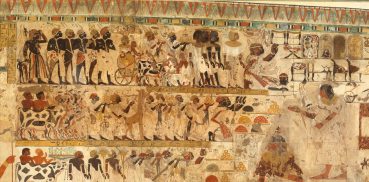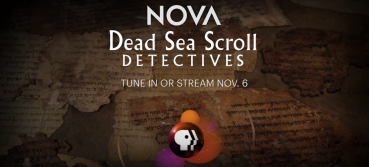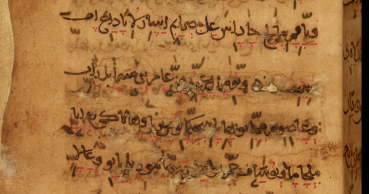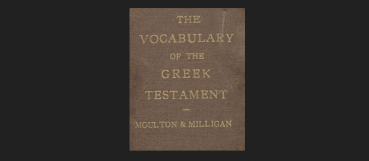Joan Taylor has written a really good post over at ASOR’s Ancient Near East Today website discussing the issue what Jesus may have looked like. She first discusses the issue that most of our contemporary and iconic images of Jesus date from the Byzantine period or later, beginning some 300 years after Jesus and reflecting more the images and ideals of periods and cultures different from that of Jesus:
Continue readingTag Archives: Biblical Studies
Children and Families in the Ancient Near East
Shawn Flynn, St. Joseph’s College, and Kristine Garroway, Hebrew Union College, have a nice article over at theconversation.com on children and families in the Ancient Near East. It provides some brief introductory insights. The article is entitled: “Children in the ancient Middle East were valued and vulnerable — not unlike children today“
Continue readingDead Sea Scroll Detectives on NOVA
Tonight (Nov 6, 2019) NOVA will broadcast and stream “Dead Sea Scroll Detectives“.
Continue reading10th Century Manuscript of Exodus, in Hebrew transliterated with Arabic and with traditional Hebrew vowel points
Viewable online at the British Library is a fragmentary codex of Exodus (containing Exodus 1:1-8:5 in 21 folios, including covers) with Hebrew transliterated into Arabic, but with traditional Hebrew vowel points. The work is incredible and beautiful and dates from the 10th century. It was purchased from an antiquities dealer in Jerusalem in the 19th century.
Here’s a summary of the contents from the British Library:
Continue readingResource: The Vocabulary of the Greek Testament
Biblicalstudies.org.uk provides great free, open-source, and online resources for the study of the Bible. This week they posted the addition of The Vocabulary of the Greek Testament, a lexicon by Moulton and Milligan (printed in 1929 and in the public domain). If you are a student of Greek and the New Testament, you may want to download this PDF from their website.
Continue readingSchiffman on Purity As Separation
Lawrence Schiffman has posted a series of brief articles on perceptions and mis-perceptions of Jewish purity laws of Second Temple Judaism. If you want to gain better understanding of Gospel texts dealing with clean and unclean, these posts may give you some insight from a Jewish perspective.
- COMPARING THE DEAD SEA SCROLLS, RABBINIC LITERATURE, AND THE NEW TESTAMENT
- RITUAL PURITY AND IMPURITY AND THE ADMISSION PROCESS
- NEW TESTAMENT TEXTS
[UPDATE: I also see that Dr. Schiffman has another, earlier, four-part series, also dealing with ritual purity in Second Temple Judaism: Body and Soul, Purity and Impurity.]
